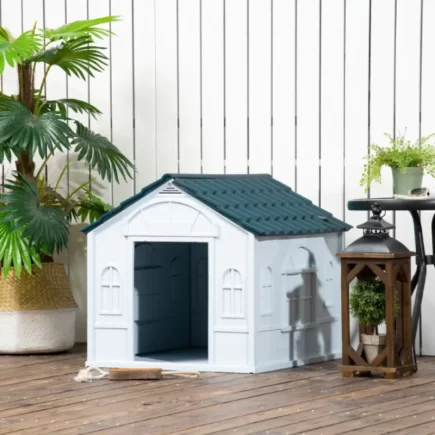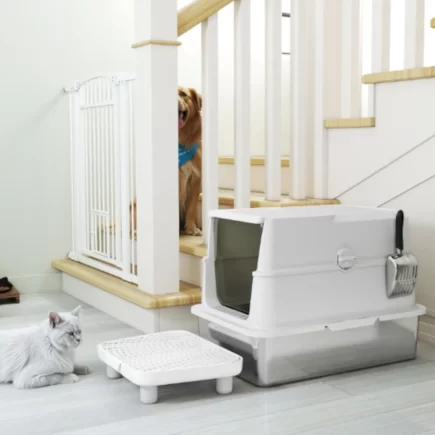Building a carport is an excellent solution for extra storage, vehicle protection, or creating an outdoor workspace. Whether you’re looking to shield your vehicles from harsh weather, set up an outdoor storage area, or enjoy a shaded space, a carport offers both functionality and cost-effectiveness. This article will walk you through the planning, construction, and finishing stages to help you create a durable and reliable carport.

Key Considerations Before You Begin
Before starting your DIY carport project, consider these essential factors:
1. Size and Layout
Carports vary in size based on the number of vehicles and additional features you need. Here’s a general guide:
| Carport Size | Dimensions (L x W) | Number of Vehicles |
| Single Carport | 16 feet x 9 feet | 1 vehicle |
| Double Carport | 18 feet x 18 feet | 2 vehicles |
| Triple Carport | 24 feet x 30 feet | 3 vehicles or large RV |
2. Location
Choosing the right spot is crucial for functionality and durability. Ensure the location is:
- Flat and Level: This guarantees the carport’s stability.
- Properly Drained: Prevents pooling water and flooding.
- Easily Accessible: Allows for convenient parking and use.
Additionally, assess the area’s exposure to wind, sun, and snow, as these factors can impact the structure’s longevity.
3. Permits and Local Regulations
Before starting, check if you need permits for your carport. Local zoning laws and setback regulations must be followed. Additionally, ensure compliance with HOA guidelines, if applicable.
Materials and Tools Required
Choosing the right materials is vital to ensuring the long-lasting durability and stability of your carport. Here’s a list of essential materials and tools:
Materials:
Selecting the right materials is vital for the carport’s long-term durability:
- Posts: Treated timber or galvanized steel.
- Beams: 2×6 timber or steel beams for horizontal support.
- Roofing: Metal roofing sheets, shingles, or corrugated steel.
- Concrete: For securing the posts in the ground.
Tools:
- Measuring Tape
- Post Hole Digger or Auger
- Power Drill
- Saw
- Level
- Safety Gear (Gloves, Goggles)
Step-by-Step Guide to Building Your Carport
Step 1: Measure and Mark the Site
This first step sets the foundation for your entire carport structure. Begin by selecting the area where you want to build the carport.

- Mark Boundaries: Use stakes and string to mark the perimeter of the carport. Ensure the layout is square (right angles) by using a measuring tape and a 3-4-5 triangle method (where the lengths of the three sides of the triangle are 3, 4, and 5 feet). This ensures the structure is symmetrical.
- Measure the Dimensions: Measure both the length and width of the area to confirm it matches the intended size of your carport (for example, 16′ x 9′ for a single carport). Double-check these measurements to avoid any mistakes that could cause problems later.
- Alignment with the House: If your carport will be attached to the side of your house, ensure the roofline is aligned properly. The height of the carport should flow smoothly with the existing roofline of the house, so there’s no awkward gap or slant. You can use a level to check vertical alignment.
Step 2: Dig Post Holes
The depth and placement of your post holes will determine the stability and durability of the carport.
Choosing the Right Depth:
| Post Hole Depth | Ground Type | Recommended Depth |
| Soft Soil | Soil, sand | 2 feet (0.6 meters) |
| Rocky or Hard Soil | Gravel, clay | 3 feet (0.9 meters) |
| Windy Areas | Any | 4 feet (1.2 meters) |
Spacing the Posts: The posts should be spaced evenly according to your carport design (usually around 8 feet apart, but this can vary depending on the size and layout). Use a measuring tape to space the posts correctly.
Step 3: Set the Posts
Now that your holes are dug, it’s time to set the posts into the ground.
- Add Gravel for Drainage: Pour about 6 inches (15.2 cm) of gravel at the bottom of each hole. This provides proper drainage and prevents water from pooling around the base of the posts, which can cause rot or weakening over time.
- Place the Posts: Insert the posts into the holes, ensuring they are standing straight. It’s essential that the posts are vertically aligned to ensure the structure is stable.
- Secure with Concrete: Once the posts are in place, pour concrete around them to secure them firmly in position. Use a level to double-check that the posts are vertical. Allow the concrete to cure for at least 24 to 48 hours before continuing with the next steps.
Step 4: Install the Support Beams
The support beams are the horizontal structures that will bear the weight of the rafters and roof.

- Aligning the Beams: Place the support beams between the posts. These beams must be level, so use a long level to ensure they are perfectly horizontal. If they are not level, the roof may slope unevenly.
- Attaching the Beams: Secure the support beams to the posts using strong, weather-resistant bolts or screws. It’s crucial to ensure that the beams are tightly fixed to the posts to provide maximum strength.
Step 5: Attach the Rafters
The rafters will support the roof of your carport, so it’s important to attach them properly for a secure structure.

- Measure and Cut Rafters: Measure the required length for each rafter, ensuring they are angled correctly to support the roof. Cut each rafter to the exact size, considering the desired roof pitch.
- Install the Rafters: Attach the rafters to the top of the support beams using metal connectors, screws, or bolts. Use brackets to add extra strength and stability, especially for larger carports. Ensure that each rafter is aligned correctly and secured tightly.
Step 6: Install the Roof
This is the final step in creating the carport’s protective cover.

- Choosing Roofing Material: Select a roofing material suitable for your climate and budget. Metal roofing sheets are a popular option because they are durable and help with rainwater runoff. If using shingles or plastic sheets, follow the manufacturer’s installation guidelines.
- Installing the Roof: Begin at the bottom edge of the roof and work your way upward. This way, the upper sheets will overlap the lower ones, ensuring water runs off easily. Maintain a slight slope on the roof to facilitate proper drainage.
Step 7: Reinforce and Finish
Once the roof is installed, you’ll need to reinforce the structure and add finishing touches to ensure long-term durability.
- Reinforce the Structure: Consider adding additional braces, knee braces, or lateral supports in areas where extra stability is needed. This will ensure that the carport can withstand wind and heavy snow loads.
- Painting or Staining: For wooden carports, apply a protective stain or paint to help preserve the wood and protect it from the elements. This will help prevent rot and increase the lifespan of your carport.
Step 8: Final Inspection
Before you begin using your carport, a final inspection is necessary to ensure safety and functionality.
- Check All Components: Make sure that all the components are secure and correctly installed. Test the stability of the posts, beams, rafters, and roof.
- Ensure Alignment: Double-check that the roof is correctly aligned. Make sure there are no gaps or misalignments that could lead to water leaks.
- Ensure Compliance with Building Codes: Review your local building codes to ensure the structure meets the required standards. If needed, get approval from your local municipality before using the carport.
Pro Tip: For a more portable and affordable carport solution, consider the Outsunny 9.6′ x 19.5′ Carport Heavy Duty Galvanized Car Canopy. It features a durable steel frame and comes with an anchor kit, ensuring that your carport will stay secure in all weather conditions.

Additional Features for Your Carport
To enhance the functionality and appearance of your carport, consider adding a few optional features:

Gutters: Install gutters to redirect rainwater away from the carport and prevent erosion.
Side Panels: Add side walls or partial walls for more protection against the wind or sun.
Lighting: Install lights inside the carport for better visibility at night, especially if you plan to use it for activities after dark.
Pro Tip: Consider the Outsunny 8′ x 7′ Carport Portable Garage if you’re looking for a versatile carport that can be used for motorcycles or garden tools. This heavy-duty storage tent is built to withstand outdoor conditions and comes with an anti-UV PE cover to protect your belongings from harsh sunlight.

Cost Considerations for Building a Carport
While building a carport is more affordable than constructing a full garage, it still requires careful budgeting. Here’s an estimated cost breakdown for your project:
| Item | Estimated Cost |
| Concrete for Post Footings | £150 – £300 |
| Wood for Posts and Beams | £200 – £600 |
| Roofing Material | £200 – £800 |
| Fasteners and Bolts | £50 – £150 |
| Labor Costs (if needed) | £500 – £2,000 |
| Additional Features (Gutters, etc.) | £100 – £300 |
On average, a DIY carport can cost between £1,000 to £3,500, depending on the size, materials, and complexity of the design.
Building a carport is like giving your car a cozy little home, complete with a roof and four walls of protection. But just like a real home, it needs a little TLC now and then. So, after you’ve built your carport and parked your car under its roof, remember, it’s not time to just kick back and relax (unless you’re in a hammock under the carport, of course). A little upkeep here and there can make your carport last longer than your neighbor’s grumpy complaints about it. Inspect, reapply, and stabilize because even the toughest carport deserves a little love.
And hey, if you can’t find the time to maintain it, at least make sure your car still looks good enough to show off under that roof!
FAQS
1.Can I build a carport on a slope?
Building a carport on a slope is possible, but it requires additional planning and effort. You’ll need to level the ground or adjust the posts to ensure the structure is stable and safe. Consider consulting a professional if the slope is significant.
2.Can I convert a carport into a garage later?
Yes, a carport can be converted into a garage by enclosing the sides, adding a solid door, and reinforcing the roof. This process is cost-effective and can provide additional enclosed space for your property.
3.How long does it take to build a carport?
The time to build a carport depends on the size, materials, and whether you’re doing it yourself or hiring help. On average, a DIY carport can take anywhere from a few days to a couple of weeks to complete, depending on the complexity of the design.





























